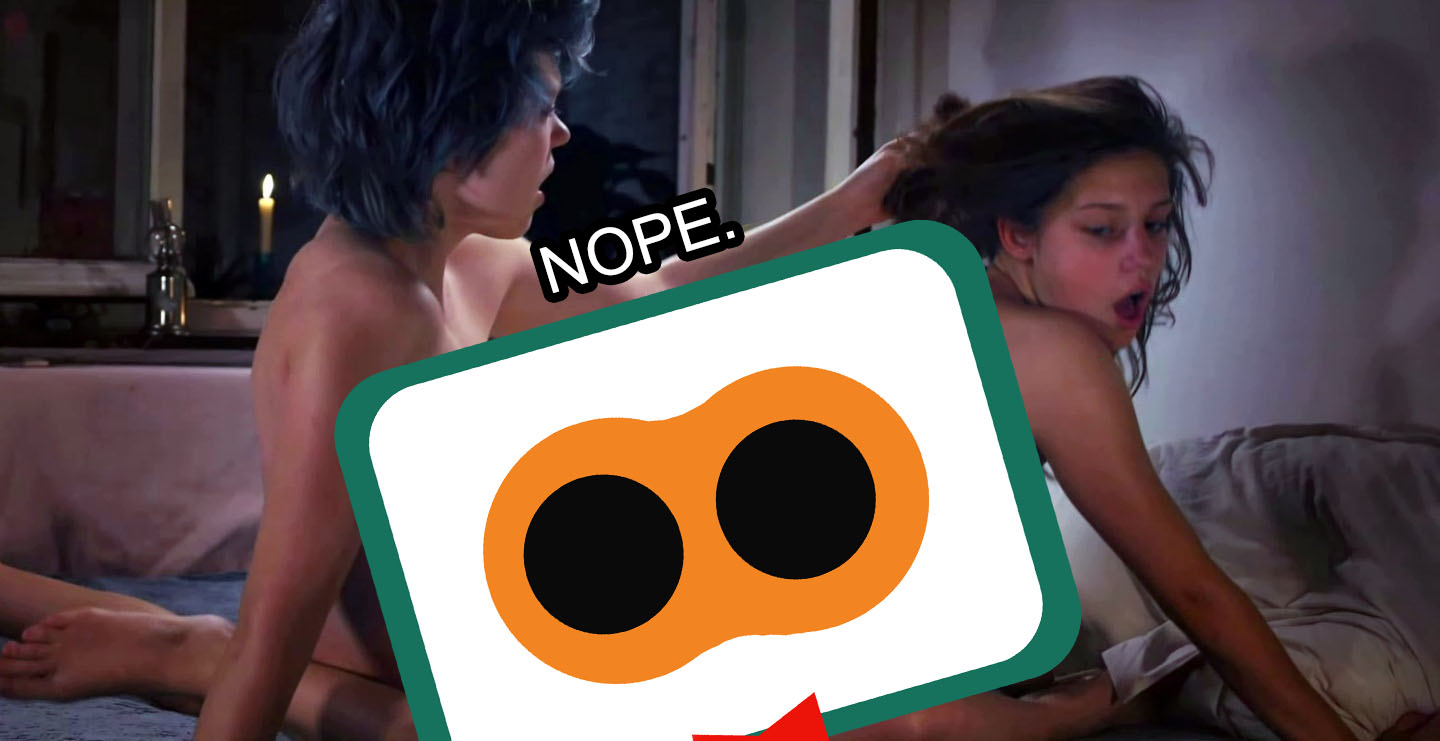‘Blue is the Warmest Colour,’ but Red is What I’m Seeing Here
This article contains spoilers for the movie, and also has an image that isn’t entirely safe for work. We did our best to edit it, though. For the children, and all.
Stop me if you’ve heard this one before, but for all of its awards and artistry, Abdellatif Kechiche’s movie Blue is the Warmest Colour is a pretty bad film.
“But how could that be?” some of you must be asking. Blue is the Warmest Colour was the star of the show during the Cannes Film Festival in 2013. It’s been lauded across the board by critics, heterosexual viewership, and – some of importance, perhaps, to some of my readers – that side of hetereosexual viewership that claims to be “sensitive” or “sympathetic” towards LGBTQ issues. Rotten Tomatoes, in fact, called it “raw, honest, powerfully acted, and deliciously intense”, not to mention “emotionally absorbing”.
Is anyone catching on to what I’m trying to drive at yet? No? Let me spell it out for you:
Blue is the Warmest Colour is a straight man’s viewpoint on how he thinks lesbian romance goes. It fails to touch upon actual, homosexual realities because of its extremely reductive perspective. Furthermore, its composition as an artsy film has the potential to damage the LGBTQ agenda in film and television by glorifying risqué, neurotic, dysfunctional, and ultimately tragic romance between women as edgy and modern.

I’m not going to discuss the controversies that took place beyond the scope of the camera (Wikipedia has a great write-up on the matter, with reliable sources). I’m also not going to hit the film for a lack of artistry. It’s beautifully put together, following through with the themes and motifs that seem to be its trademark. The cinematography is great, and I suppose it does deserve a pat on the head for successfully recording the “most graphic” lesbian sex scenes in movie history (although I believe that you’d be better off watching actual amateur porn rather than look for steamy action in this movie). Furthermore, if you’re looking to watch a postmodern romance with lesbians, then stop reading this article because Blue is the Warmest Colour is definitely the movie for you. I just sincerely hope that you’re critical enough to realize that this film does NOT, in any way, portray an authentic, intimate lesbian relationship, nor should it serve as a gateway to understanding lesbian women.
On that note, there’s the OTHER reason why I feel incredibly uncomfortable about this movie and have the strong need to talk about why. It seems as though nearly everybody thought it was an LGBTQ masterpiece. Beyond shrieking indignation at the sheer lack of sensitivity on the matter (read: “DID YOU EVEN ASK LGBTQ PEOPLE ABOUT THIS FIRST?”), Blue is the Warmest Colour might just end up becoming one of those instructional, milestone movies that are meant to expose the common masses to newer, “higher” realities – a very real concern in my eyes, given the fact that it was glorified in the awarding body of Cannes. Frankly, it is deplorable how I feel like that one surprise plot twist in Valentine’s Day could do more for furthering authentic portrayals of LGBTQ romance than this entire movie did – but that bit, I’m sure, has been viewed more as a fun surprise, or glossed over entirely by “smart” viewers by merit of the movie’s position as a romantic comedy.

Let’s take a step back from discussing the failure of Blue Is the Warmest Colour and touch, albeit briefly, on how the movie is just another tired addition to an already ridiculously long list of risqué LGBTQ films. Dark, artistic and “modern” representations of homosexual romance has been the vogue since forever (or maybe since Queer as Folk and The L Word), and I think that it’s high time that we stop. There’s no lack of fluffy, feel good romances nor poignant and not totally overblown dramas on the market for straight people, much less an LGBTQ movie that isn’t a little over the top with the sex. The rainbow end of the fence pays just as much, and just as good once you’ve caught their attention. Why isn’t anybody writing more for them?
Not all lesbian women are sensitive and artistic souls whose passions and “unique” sexuality drive them to madness. Not all lesbian women are going to go crazy on their lovers just because they’re feeling a little insecure. Not all lesbian women have long, drawn out, Kama Sutra-worthy sex. We need to move away from the yuri manga level narratives and start finding earnest, innocent, and humble means to show that lesbian relationships can be real. LGBTQ portrayals in film and television shows are already saturated with dark club scenes, hypersexualized bodies, near-pornographic sex scenes, and tragic plot twists that push the already straining boundaries of “suspension of disbelief” to their breaking point. We also need to move away from the same issues that haunt the portrayal of women in film and television, because they’re kind of really all over this film.
When are we going to be able to watch a touching romance about two women who aren’t white, rich and/or tortured artists and Size 1 or less? How about we go for a biracial romance, or try to tackle an LGBTQ family story, or go for some May-December fun, or cast some actors who aren’t skinny as fuck –
– oh, right.
None of that is “edgy” enough.





Do you agree with Pam? Let’s talk about this movie, and what you felt about it, here!
Pingback: Why, Yes, We DO Exist, Take 2: Thoughts on the Gendering of Geekdom in the Philippines - Girls Got Game
Pingback: Gendering of Geekdom in the Philippines - Why, Yes, We DO Exist, Take 2